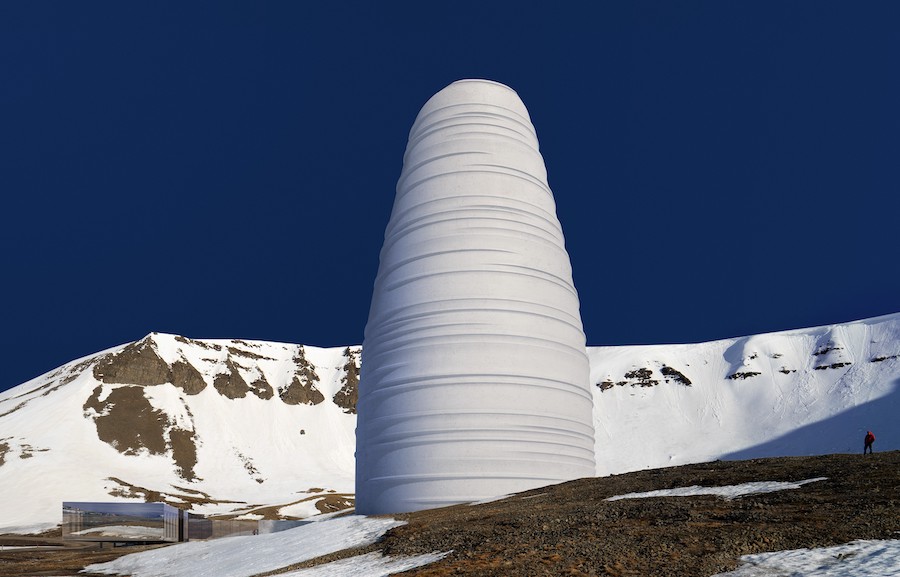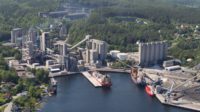As if construction were not difficult enough in the icy wilderness of Svalbard—an archipelago halfway between Norway and the North Pole—concerns about the global coronavirus pandemic have postponed plans by Oslo architecture firm Snøhetta to move forward with a sleek visitor’s center and exhibition space at the main island’s Global Seed Vault, which stores the world's preeminent seed collection.
The vault is a secured space carved into a mountain base under permafrost near Longyearbyen, Svalbard’s main settlement, with a population of 2,368. Its seed collection is a genetic trove of food crop and agricultural varietals including 1 million samples covering 5,000 plant species. The vault opened in 2008 as a backstop for gene banks around the world, storing plant genetic resources against the threat of biodiversity loss due to man-made or natural disaster.
Snøhetta, which has worked previously on Svalbard with engineers at Olav Olsen to build service buildings for receiving seed shipments at the vault, has plans for a visitor center and 60-ft-tall curving cylindrical composite, dual-chambered exhibition and lecture hall called The Arc. The two buildings would be connected by a glass walkway; all would be grounded on piles driven through the permafrost soil into bedrock. The structures themselves take into account the special requirements and challenges of construction in place like Svalbard and will depend on precasting and pre-fabricated materials and pieces.
COVID-19 now has the project in stasis, says Snøhetta senior architect Julie Aars. “Svalbard has been hit hard because tourism has gone down. Things are a bit tough there,” she says. The archipelago is remote but it does receive visitors, and currently there is no easy way for people to visit the vault.
The Arctic Memory partnership arranging land, building approvals and financing for the project is going to need better financial conditions for The Arc to go ahead, Aars says, though she remains optimistic.
Engineers face special construction challenges on Svalbard even in more normal times, says Audhild Storbråten, a geological engineer and project leader at Hæhre Arctic, a Norwegian specialty contractor. The firm worked with Snøhetta to develop basic principles for the foundation and construction of The Arc and has done restoration work on the Global Seed Vault itself. The $10-million original vault received a $22-million upgrade in 2017 to further waterproof and secure the space after its entrance tunnel was flooded. Additionally, unexpected and abnormally warm temperatures had melted some of the permafrost around the entrance.
The problem of a melting permafrost has been accounted for in construction, Aars and Storbråten say, as the layer must be insulated against heat coming from any structure. A building set on melting permafrost can run into structural problems quickly. “Earlier one could design with friction piles frozen into the ground. These days due to climate changes it is more common to design with end-bearing pile foundations into the bedrock,” Storbråten says.
Meltwater and surface water are crucial influences. Should The Arc press ahead, the conical volume will be set on piles for all direct load support; gravel fill will be placed under and around it, allowing passive cold air to ventilate the space. This prevents transfer of heat from the warmer interior of the exhibit space to the frozen ground.
Much of the glass, cross-laminated timber, steel and cladding that will form The Arc will be pre-fabricated far from Svalbard and assembled on site. “If anything breaks or is not accounted for, the delivery time can be long,” Storbråten says.




Post a comment to this article
Report Abusive Comment